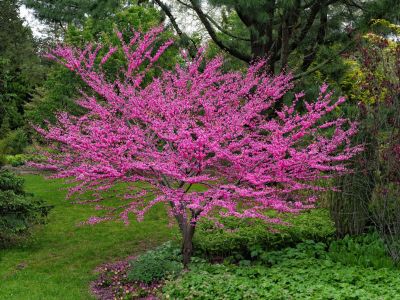Redbud Tree Information
The redbud tree (Cercis canadensis) is a member of the bean family and is known as a Judas tree because according to some, Judas Iscariot used a relative of the redbud to hang himself. This tree is an attractive ornamental tree that is native to the eastern United States but will grow in USDA planting zones 4 through 8. Mauve-pink blossoms greet the spring, lasting for two to three weeks and adding color to any landscape. Leaves are heart-shaped with a long stem. Redbuds are not large trees and will reach between 20 and 30 feet (6 and 9 m.) in height and 15 to 35 feet (4.5 to 0.6 m.) in width. The trunk is generally divided close to the ground. Growing redbud trees in naturalized or woodland areas is popular as is using them for a shrub border or specimen. Redbud trees do not live long and will usually die from disease within 20 years.
Planting a Redbud Tree
Planting a redbud tree is best done in early spring. These ornamental beauties prefer well-drained soil and a partly shaded location. Once you have selected your site, dig a hole that is at least three times as wide as the tree’s root. Be sure that the root ball is even with the ground when you place the tree in the hole. Once you have your tree placed in the ground, be sure that it is straight and backfill your hole with native soil. Water thoroughly after planting a redbud tree.
How to Care for a Redbud Tree
The care of redbud trees requires minimal effort. Place about 3 inches (7.6 cm.) of mulch around the tree, but not touching the trunk, to help retain moisture. Prune the redbud in the fall to maintain a natural growth habit and to trim off any dead branches. Keep the soil moist, but not saturated, while the tree is establishing. Redbuds occasionally suffer from canker problems or battle tree borers. Be sure to obtain proper diagnosis before treating your tree for disease or insect infestation.
